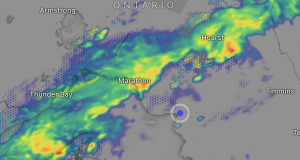On November 19, 2020, 60-year-old Gary Brohman died in an exchange of gunfire with Constable Marc Hovingh of the Ontario Provincial Police. The shootout cost the officer his life as well. Notwithstanding the fact that Cst Hovingh had succumbed to his wounds, the SIU commenced an investigation as the incident included a death at the hands of a police officer. The Director of the Special Investigations Unit, Joseph Martino, has determined there are no reasonable grounds to believe that Cst Hovingh committed a criminal offence in connection with Mr. Brohman’s death.
Analysis and Director’s Decision
On November 19, 2020, Gary Brohman died in an exchange of gunfire with an OPP officer – Cst Marc Hovingh. The shootout cost the officer his life as well. Notwithstanding the fact that Cst Hovingh had succumbed to his wounds, the SIU commenced an investigation as the incident included a death at the hands of a police officer. Cst Hovingh was, notionally, the subject of the investigation. On my assessment of the evidence, there are no reasonable grounds to believe that Cst Hovingh committed a criminal offence in connection with Mr. Brohman’s death.
The law of self-defence in Canada is rooted in section 34 of the Criminal Code. It legally justifies conduct intended to thwart a reasonably apprehended attack, both actual and threatened, if the conduct is itself reasonable in the circumstances. Among the considerations bearing on the reasonableness of the conduct in question are the nature of the force or threat; the extent to which the use of force was imminent and whether there were other means available to respond to the potential use of force; and, whether any party to the incident used or threatened to use a weapon. In my view, the force used by Cst Hovingh, namely, the repeated discharge of his firearm at Mr. Brohman, fell squarely within the justification of section 34.
When Cst Hovingh entered the trailer and was quickly confronted by Mr. Brohman, at a distance of some four to five metres away, firing a shotgun at him, he was entitled to resort to lethal force of his own. The officer’s life was manifestly in jeopardy at the time, as his subsequent passing due to shotgun wounds to the leg confirmed. And nothing short of a firearm would have provided the sort of rapid and immediately incapacitating effect that was imperative if Cst Hovingh was to have any chance of saving his life. Withdrawal or disengagement was not an option largely because neither was available to Cst Hovingh. The officer was caught by surprise as Mr. Brohman turned toward him with a shotgun and started to fire. In the circumstances, it would appear that the officer had only split seconds to react, and may have even been wounded, by the time he drew his gun and started to fire back.
Cst Hovingh’s gunfire was also a reasonable response in defence of the lives and safety of his partner, WO #1, and the civilian witnesses – CW #1 and CW #2 – all of whom were in the vicinity of the trailer when the shots rang out. Faced with an armed individual shooting at him, Cst Hovingh could only have concluded that all of their lives were in imminent peril if Mr. Brohman was left unchecked and allowed to exit the trailer, particularly as WO #1 was in the area of the trailer door’s threshold when Mr. Brohman first fired. Mr. Brohman must have known that his arrest was unavoidable and he acted as if he had nothing left to lose. On this record, it is entirely conceivable that Cst Hovingh’s actions served to deter what could well have been a continuing risk to the lives and limbs of others around him.
The issue of whether the officers were lawfully inside the trailer at the time of the shooting is one that need not be addressed. In R v Feeney, [1997] 2 SCR 13, the Supreme Court of Canada held that police officers could generally not lawfully force their way into a dwelling-house to effect an arrest in the absence of a warrant. [3] On the one hand, it is clear that Cst Hovingh and WO #1 forcibly entered a trailer where Mr. Brohman resided without judicial pre-authorization or the existence of exigent circumstances. On the other hand, Mr. Brohman had set up his trailer unlawfully on land owned by CW #1; he was a trespasser on the property whom the officers had reason to believe was engaged in an illegal marijuana grow operation. Be that as it may, Mr. Brohman was at no point entitled to use lethal force against the officers. When he did so, whatever the officers’ status inside the trailer, they were entitled to defend themselves. [4]
A final note is warranted about the aftermath of the shooting and, specifically, the length of time it took before police and then paramedics entered the trailer. Though the shooting happened at about 11:00 a.m., it was not until about 12:30 p.m., with the arrival of ERT officers, that police gained entry. I am unable to fault the officers on scene for waiting for ERT officers. While WO #1, initially, and then other arriving officers would have known that Cst Horvingh had been injured, no one was sure about the status of Mr. Brohman. As far as they knew, he could easily have been lying in wait in the trailer still capable of inflicting grievous bodily harm or death. In this regard, it is telling to note that post-incident forensic analysis of the scene led to the discovery of dozens of improvised explosives and incendiary materials on the property, and numerous firearms inside the trailer. Moreover, a civilian witness, on hearing of the shooting, contacted police at about 3:30 p.m. to warn them of his concern that the property might be booby-trapped with pipe bombs and propane tank bombs. In the circumstances, I am satisfied that the decision to wait to deploy an ERT team – with their specialized training and resources – was an entirely prudent one.
In the result, I am satisfied for the foregoing reasons that Cst Hovingh conducted himself lawfully throughout his engagement with Mr. Brohman, justifiably resorting to lethal force that resulted in Mr. Brohman’s death at the same time as he too suffered mortal gunshot wounds. The file is closed.
The report in its entirety can be found here (link).
- SSM RotaryFest Take Your Pick Draw is back - July 4, 2025
- Thank You – M.H.S. Graduation 2025 - July 2, 2025
- Men’s NIght Golf – June 26 - July 1, 2025
 Wawa-news.com You can't hear the 'big picture'!
Wawa-news.com You can't hear the 'big picture'!

